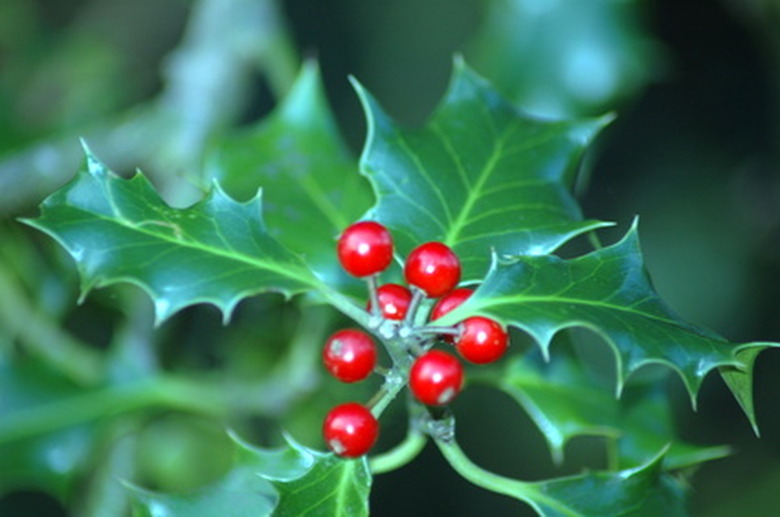Facts On The Holly Tree
American holly (Ilex opaca) trees are a member of the Aquifoliaceae family and serve a variety of uses. These trees work well for hedges, along the edges of parking lots, as a residential ornamental tree, and as a specimen tree. Holly trees have also been used as decoration for many cultures.
Step 1
At maturity, holly trees reach a height of 35 to 50 feet and a width of 15 to 25 feet. This pyramidal tree features dense foliage and grows less than 12 inches annually, making it a slow-growing tree. Holly trees feature simple alternate leaves that are oval in shape and which feature points along the edges. These evergreen leaves are 2 to 4 inches long and less than 2 inches wide.
Climate
Step 1
Holly trees thrive in USDA Hardiness Zones 5 through 9, making this a tree that grows well throughout the majority of the United States. Within these zones, holly trees should be planted in acidic or slightly alkaline soils that are clay, loamy or sandy in nature. Holly trees prefer sites where the soil is well-drained and the tree receives partial shade. These trees are highly tolerant of both drought and salt conditions.
Step 2
- At maturity, holly trees reach a height of 35 to 50 feet and a width of 15 to 25 feet.
- Holly trees feature simple alternate leaves that are oval in shape and which feature points along the edges.
History and Lore
Step 1
Holly has meant many things to many cultures throughout the ages. To the Greeks, it was a symbol of foresight. Romans gave it as a gift at the time of Saturnalia to represent good will. Chinese decorated for the New Year with holly leaves and Christians used holly to represent a crown of thorns. Past cultures have also used holly to treat cough, fever, measles, smallpox, kidney disease and pain caused by childbirth. When used ornamentally, Europeans believed that the tree would protect the home from evil spirits and lightning strikes.
Uses
Step 1
Historically, the holly berries were used as decorative buttons by the American Indians. Many other tribes saw these buttons and bartered with the American Indians for them. Today, the wood from the holly tree is used for the manufacturing of canes, scroll work, furniture and inlay work. Traditionally the leaves and berries of the holly tree are very popular as decorations around the holidays.
Step 2
- Holly has meant many things to many cultures throughout the ages.
- Today, the wood from the holly tree is used for the manufacturing of canes, scroll work, furniture and inlay work.
Problems
Step 1
The most common pests to damage holly trees are the holly leaf miner, spider mites and scales. While few pests affect this plant, there are many diseases which can cause damage to holly trees. Some common diseases include tar spot, fungal diseases, cankers, spine spot, chlorosis, scorches, purple blotches and black root rot.
